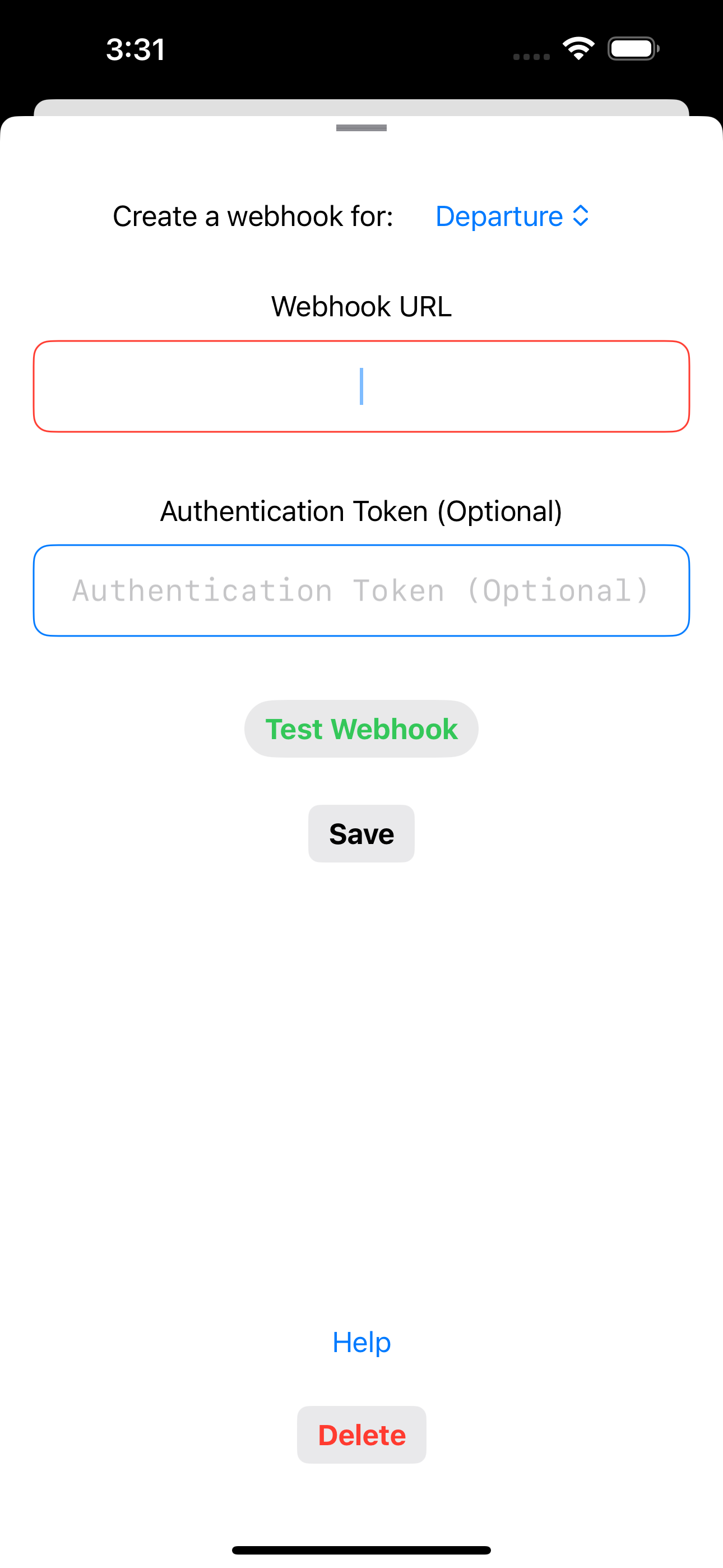Webhooks
A webhook is simply a URL. The URL points to a web site that is specifically configured to receive data from Visitd.
Webhooks are an experimental feature that are not fully supported. Breaking changes may be introduced at any time.
If you don't know what webhooks are, they probably are not useful to you.
The webhook functionality is provided with no warranty of any kind.
If a webhook is configured, Visitd will make a POST request to the URL whenever you arrive or depart a location, as appropriate.
There are a few things to note:
-
Visitd always makes a POST request to the URL. No other methods are allowed.
-
No error checking is performed.
-
If a token is provided, it will be sent to the server as a Bearer token.
-
Any data returned from the request is ignored.
-
If a webhook is provided, it will be called for every location. It is not possible to only call a webhook for a specific location.
Visitd can make a HTTP request to a web server whenever you arrive or depart a location. To enable a webhook:
-
On the main configuration screen, click on Edit or Set on either the Arrival Webhook or Departure Webhook line. If there is already a webhook configured, it will say Edit. If there is not yet a webhook configured, it will say Set.
-
Enter the URL in the first box and the auth token, if there is one, in the second box.
-
Click on Test. When satisfied with the webhook, click on Save.
-
Click on Close.
To test the webhook, click on Test Webhook. If the server returns any data, it will be displayed.
To save the webhook, click on Save.
To close the dialog, click on Close.
To remove a configured webhook, set the URL to an empty string.
The data posted to the server will be a JSON object like:
{
latitude: Double,
longitude: Double,
horizontalAccuracy: Double,
arrivalDateTimestamp: Double,
departureDateTimestamp: Double,
arrivalDate: Date,
departureDate: Date,
}If the post is the result of an arrival, the departureDate will be Date.distantFuture, or January 1, 4001 at 12:00:00 AM GMT. The departureDateTimestamp will be approximately 64,092,211,200.

Testing
To test a webhoook, enter the URL and the token, if any, and tap on Test. Visitd will make a POST request to the URL. If the server returns any data, it will be displayed.